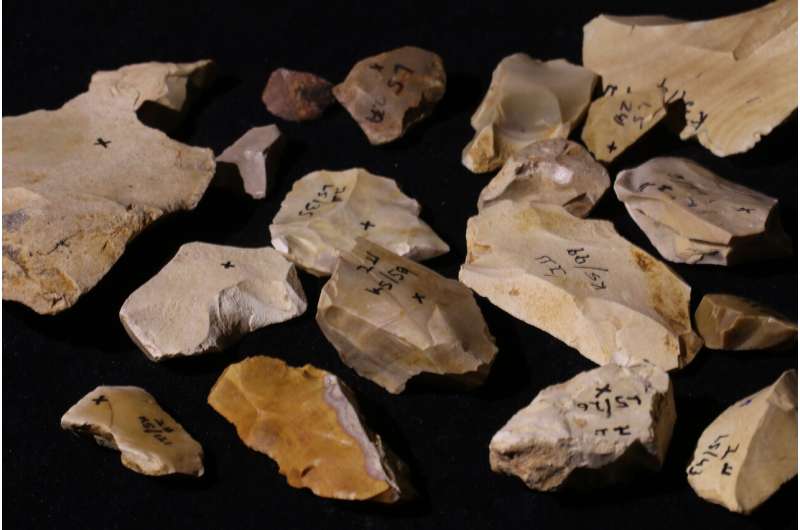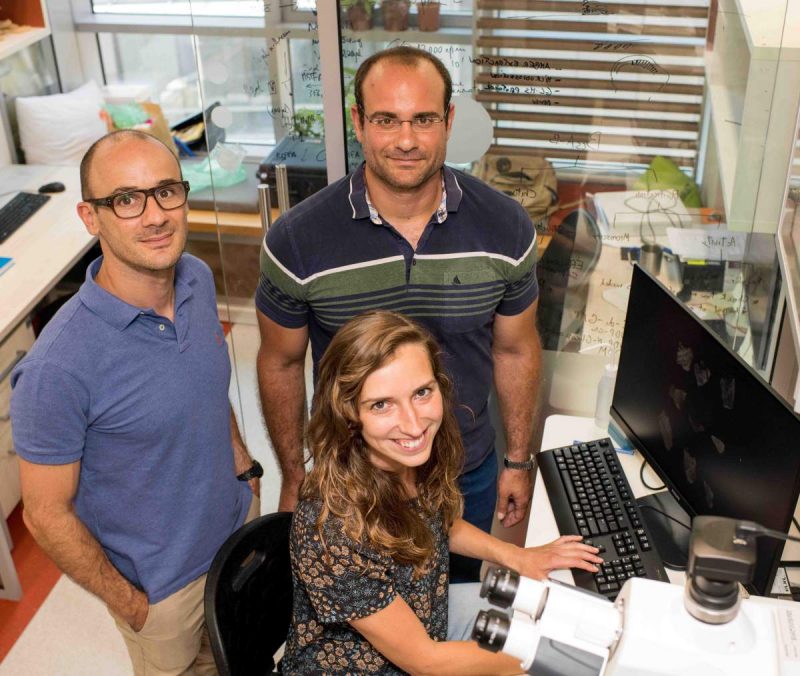
When did humans tame fire?
Early humans probably used fire from wild sources, like lightning strikes, as early as a million years ago. But direct evidence of human-controlled fires from that long ago has been hard to come by. In June 2022, a group of Israeli scientists and a colleague from Canada published a new paper in Proceedings of the National Academy of Sciences, describing a new use of artificial intelligence (AI) to seek evidence of controlled fires by early humans. They focused on stone tools unearthed at Evron Quarry, a site on the Mediterranean Sea in Israel, which was extensively excavated in the 1970s. The new work suggests early humans who lived at this site did use controlled fires to cook food and make tools as early as between 1 and 0.8 million years ago.
The scientists used artificial intelligence to detect subtle changes in the atomic structure of ancient stones found at Evron Quarry. It’s possible these stones burned in some of the earliest known campfires.

Rewriting the story of tamed fire
The scientists were seeking a way to identify evidence of fire, in artifacts that showed no visible signs of fire. The authors said of their study:
[It] reveals the presence of fire in a Lower Paleolithic site lacking visible signs of pyrotechnology [controlled fire in ancient times]. And adds a new Lower Paleolithic site to a handful of archaeological sites with evidence associating early hominin-produced artifacts and fire.
And that’s exciting! It suggests artificial intelligence can be used as a tool for learning more about our early ancestors. To that end, this research group wants other researchers to use their technique, to take second looks at sites where early humans lived and perhaps left other hidden signs of their early mastery of fire.
So the use of artificial intelligence might change how we, modern humans, tell the story of our evolutionary journey.

AI sees what we couldn’t see before
So these researchers used AI to see what earlier scientific research hadn’t been able to see before.
At Evron Quarry, in the late 1970s, archaeologists excavated simple flint handaxes, flint blades and evidence of their creation, as well as animal remains. What that dig didn’t uncover was obvious visual evidence of fire use at the site. This was pointed out in the June 13, 2022, research paper published in the Proceedings of the National Academy of Sciences. Researchers suspected it should be there, given the strong hints of fire use at nearby sites from the same era:
There is no visual evidence of heat-related features on these materials, i.e., soil reddening, pot lids, discoloration or presence of luster on flint tools, warping, cracking, shrinkage, or color change to faunal remains.
To find that evidence today, the team created a deep-learning program for the AI to use. The program focuses on recognizing the effects of fire on flint samples heated in the lab to high temperatures. The AI was then able to spot the same signs of fire on the Evron Quarry artifacts.

A new look at old evidence
Because evidence of heat is so difficult to detect, researchers had another challenge, that of developing a way of looking for signs the artifacts and bones found at Evron Quarry still carry to this day. Essentially, they developed a spectroscopic “thermometer” based on what’s called Raman spectroscopy, which measures the absorption of ultraviolet light. Add to that the deep learning algorithms developed by these researchers … and the AI could differentiate burnt and unburnt pieces of modern flint and even reveal the temperatures at which they burned.
So the scientists had a new, reliable “thermometer.” It let them see that tools from the Evron Quarry site had been heated up to a scorching 1,112 degrees Fahrenheit (600 degrees Celsius). They said in their paper:
A peak in the data, however, developed at a much more temperate 752 degrees Fahrenheit (400 degrees Celsius). And this was the temperature to which most of the flint tools had been exposed.
Animal bones showed signs of being cooked at temperatures in a similar range when tested with more traditional techniques. This included gazelles, cervids, aurochs, hippopotamus, two different species of proboscideans and a suid.
Firemakers or fire finders?
The researchers admit there might be other explanations for how the animal remains and tools were heated to such extremes. For instance, wildfires still might be the cause. Yet, they said, the discovery of so many objects in the same location is telling: the arrangement of the artifacts – when they were first unearthed in the 1970s – suggests the people who worked and cooked there returned again and again.
It appeared that the site was in use for generations. And that suggests the fires were set on purpose.
Bottom line: When did humans tame fire? Probably early humans used fire from lightning strikes a million years ago. But when did we learn to control it? An AI-driven investigation – released in June 2022 – found evidence hominins tamed fire as early as one million years ago.
Source: Hidden signatures of early fire at Evron Quarry (1.0 to 0.8 Mya)











